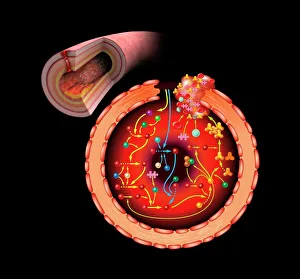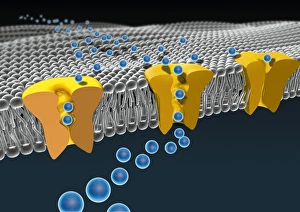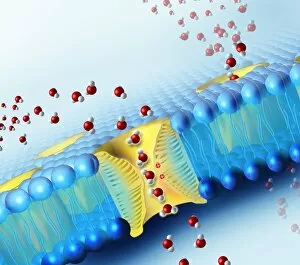Phospholipids Collection
Phospholipids, the versatile molecules that play a crucial role in various biological processes, are at the heart of scientific exploration
All Professionally Made to Order for Quick Shipping
Phospholipids, the versatile molecules that play a crucial role in various biological processes, are at the heart of scientific exploration. From their involvement in the blood coagulation cascade to their contribution to cell membrane ion channels, they have captivated researchers worldwide. Intriguing artwork C016 / 9873 showcases the intricate connection between phospholipids and the blood coagulation cascade. This captivating image unveils how these lipid molecules interact with proteins, ultimately leading to clot formation and preventing excessive bleeding. Moving on to artwork C016 / 7689, we delve into another fascinating aspect of phospholipids: their influence on cell membrane ion channels. These microscopic gatekeepers allow ions like potassium to flow in and out of cells, regulating vital cellular functions. The artwork beautifully illustrates this intricate dance between phospholipids and ion channels. Zooming even closer into the world of phospholipids, we encounter mesmerizing microscopic views that reveal their structural beauty. Through electron microscopy techniques such as TEM (transmission electron microscopy) and SEM (scanning electron microscopy), scientists capture stunning images showcasing liposomes – tiny vesicles composed of phospholipid bilayers. The TEM images unveil liposomes with remarkable detail – spherical structures encapsulating aqueous solutions within a double-layered membrane made up of phospholipids. These artificial lipid spheres hold great potential for drug delivery systems due to their ability to encapsulate therapeutic agents efficiently. Shifting our focus from liposomes back to natural systems, we explore aquaporins through captivating artwork. Aquaporins are specialized protein channels embedded within cell membranes that facilitate water transport across biological barriers by interacting with surrounding phospholipid bilayers. The artistic representation highlights this essential function while emphasizing the interplay between aquaporins and phospholipids. Additionally, comparing bacterial cell walls provides further insight into how different organisms utilize or modify phospholipids.









